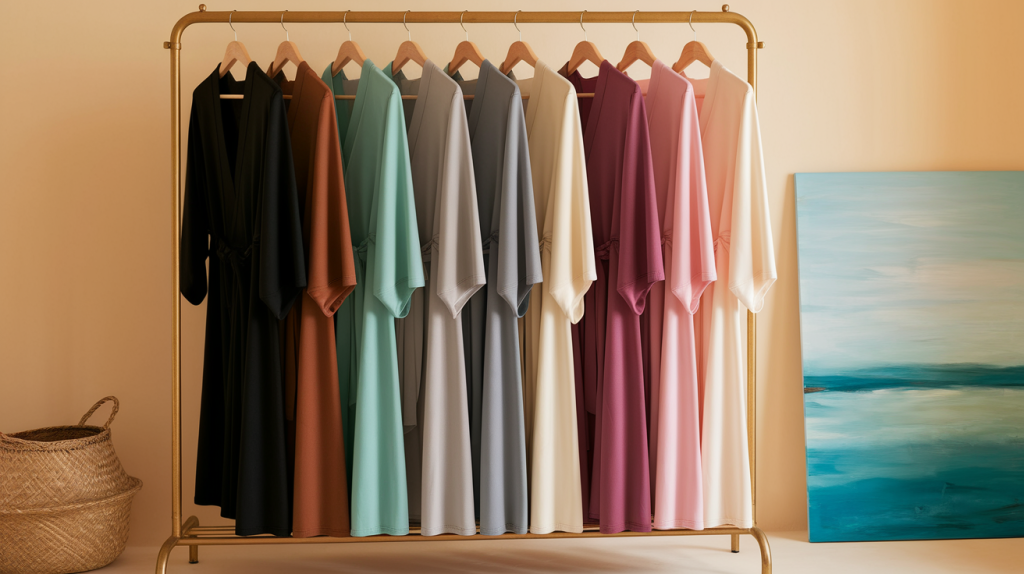Dubai’s $10.88 billion fashion market, with per-person annual purchases of 40.5 items, is set to nearly double by 2025, driven by a multicultural population and growth in modest, sustainable, and luxury segments.
The city’s top-tier digital infrastructure, reliable couriers (Aramex, DHL), business-friendly policies (no income tax up to AED 375,000, 100% free-zone foreign ownership), and global logistics hub make it ideal for launching an online clothing venture.
By leveraging these advantages and targeting niche trends, entrepreneurs can tap into Dubai’s booming e-commerce landscape with minimal barriers.
Market Research and Business Planning
Research the market to understand current trends and the level of competition in the industry. A clear plan ensures you spot opportunities and launch successfully in Dubai’s fashion scene.
Understanding the UAE Fashion Market: The UAE fashion market is diverse, with rising demand for sustainable, modest, and affordable clothing, while luxury remains strong, non-luxury brands dominate 90% of sales.
Identify your niche:
- Women’s wear (most significant market segment)
- Activewear and sportswear
- Modest fashion for local preferences
- Affordable everyday fashion
Analyze your competitors: By checking their prices, styles, and marketing approaches. Look at both local UAE brands and international brands selling in Dubai.
Define your unique selling proposition (USP): What makes your brand different? Is it better quality, lower prices, unique designs, or sustainable materials?
Create a basic business plan:
- Startup costs and ongoing expenses
- Sales goals for the first year
- Marketing strategy and budget
- Target customer profile
- Product sourcing plan
Legal Requirements and Business Registration
Registering your business is essential for running your online clothing store in Dubai. The UAE offers various business structures and registration options, each with different benefits and requirements that influence costs, ownership, and operational flexibility.
Choose Your Business Structure
You have three main options for setting up your online clothing business.
|
Sole Proprietorship |
LLC (Limited Liability Company) |
Free Zone Company |
|
Simple and cheap, but you’re personally responsible for all business debts. Good for very small operations. |
Protects your personal assets and looks more professional to customers and suppliers. Most popular choice for clothing businesses. |
Offers tax benefits and 100% foreign ownership, but it may limit where you can do business in the UAE. |
Mainland vs Free Zone
Mainland allows UAE-wide operations but requires a local sponsor. Free zones offer 100% ownership, tax perks, and easier setup—ideal for online clothing businesses.
For detailed information about different free zones and their specific benefits for online clothing businesses, study our comprehensive guide.
Apply for an E-Commerce License
Step 1: Reserve Your Business Name: Choose a unique, culturally appropriate name that aligns with your brand and is available for registration.
Step 2: Gather Required Documents: Prepare passport/ID copies, trade name certificate, and any corporate documents needed for your application.
Step 3: Obtain Initial Approval: Apply through DED (mainland) or the relevant free zone authority by submitting your business plan and activity details.
Step 4: Submit Final Application & Pay Fees: Complete your application with all documents and make the necessary payments for processing.
Step 5: Receive Your E-Commerce License: Once approved, you’ll receive your license to legally run your online clothing business in Dubai.
Estimated costs: AED 15,000 – 50,000 depending on your chosen structure and location.
Time involved: 2-4 weeks for free zones, 4-6 weeks for mainland business.
You’ll also need import/export permits if you plan to bring in fabrics or materials from other countries.
Building Your Online Store and Brand Identity
After registering your business, focus on building a strong brand and a professional, user-friendly online store to attract and retain customers.
Brand Development
- Culturally Appropriate Name: Easy to pronounce in English & Arabic; respectful of local values
- Simple, Memorable Logo: Clean design for web, social, packaging
- Clear Mission & Vision: Emphasize sustainability, quality—key UAE consumer values
- Targeted Positioning: Appeal to luxury, modest, or eco-conscious fashion segments
E-commerce Platform Setup
- Choose Your Platform: Shopify for simplicity or WooCommerce for customization (both support Arabic)
- Mobile-Friendly Design: Sharp images, intuitive menus, bilingual content
- Local Payment Gateways: Integrate PayTabs, Telr, or Stripe for secure UAE payments
- Multiple Payment Options: Offer COD, credit cards & digital wallets to suit customer preferences
Add clear product descriptions, size charts, and return policies. UAE customers want to know exactly what they’re buying.
Product Sourcing and Supply Chain Management
Getting quality products to your customers efficiently is key to your online clothing business’s success. You need reliable suppliers and smooth logistics to keep customers happy and your business profitable.
Sourcing Strategies: Choose a sourcing model that fits your budget—manufacturing, wholesale, or dropshipping. Local sourcing is faster; international sourcing is cheaper but slower. Always check quality with samples, and plan storage via fulfillment centers or at home to manage costs.
Inventory and Logistics: Logistics and inventory are key to success. Use trusted couriers like Aramex or DHL with COD options. Track stock with inventory systems, offer easy returns, and work with 2–3 reliable suppliers for quality and pricing.
Marketing and Growing Your Online Business
Once your store is ready, you need to attract customers and build sales. Effective marketing helps people find your brand and keeps them coming back for more purchases.
Digital Marketing Strategy:
- SEO: Use keywords like “Dubai fashion” to improve search visibility.
- Social Media: Post style content on Instagram and TikTok to engage UAE shoppers.
- Influencer Marketing: Collaborate with local influencers—even micro-influencers can drive sales.
- Email Marketing: Send updates and offers to keep customers engaged.
- Paid Ads: Use Google and Facebook Ads to target specific audiences.
Local Market Engagement:
- Fashion Events: Join Dubai Fashion Week to boost brand exposure.
- Pop-Up Shops: Open short-term stalls in malls for offline engagement.
- Media Outreach: Partner with bloggers and local media for visibility.
- Multilingual Support: Offer service in English, Arabic, and Hindi to reach more customers.
Financial Planning and Tax Considerations
|
Initial Setup Costs Expect to spend AED 50,000 – 150,000 |
↓
|
Monthly Operational Costs Plan for AED 5,000 – 15,000/month |
↓
|
Marketing & Advertising Budget Keep aside 10–20% of revenue |
↓
|
Technology & Platform Costs E-commerce platforms (like Shopify): AED 100–300/month |
Tax Requirements:
- Corporate Tax: No tax on income up to AED 375,000; 9% applies above that from June 2023.
- VAT: Charge 5% VAT on sales; register if revenue exceeds AED 375,000/year.
- Tax Filing: File VAT quarterly and corporate tax annually.
- Record Keeping: Keep all financial records for at least 5 years.
Starting an online clothing business in Dubai offers huge opportunities with its $10.88 billion fashion market, business-friendly policies, and tech-savvy customers. Follow these steps, plan carefully, and your fashion brand can survive in this exciting market.


